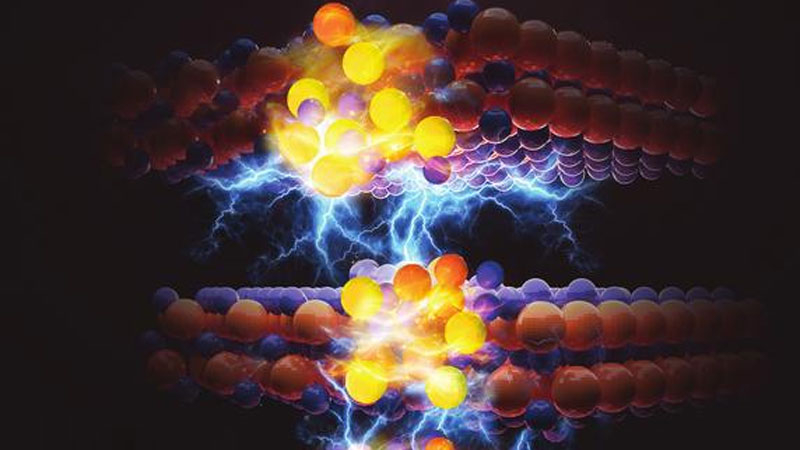An international team of scientists has discovered an amazing effect in a semiconductor such as indium selenide (In2Se3). Under the influence of a current, the material passed from a crystalline form to an amorphous one, spending a million times less energy than in the case of conventional pulsed phase change memory recording (semiconductor or rewritable optical discs such as DVD). The discovery promises to lead to the creation of incredibly efficient computer memory.

An artist’s impression of the avalanche-like process of amorphization in indium selenide. Image Source: Akanksha Jain
Phase change memory, whether semiconductor or in the form of optical disks, remains quite energy-intensive during the moments of writing and erasing, although it can store data without consuming energy. Writing and erasing occur in pulses that literally melt the material in the cell or disk layer—heating in a local area can reach 800 °C. Rapid cooling of the melt does not allow it to restore its crystalline structure. The amorphous state leads to high current resistance, and the crystalline state leads to low current resistance, which determines the cell state 0 or 1. With optical storage, everything works differently, but the principle is the same.
Conducting experiments at the University of Pennsylvania (UPenn) with indium selenide wire, scientists discovered that the material completely turned into an amorphous state without exposure to a pulse. A small current was passed through the wire, and at one point it stopped passing. The analysis showed that the material acquired an amorphous structure. Scientists from the Massachusetts Institute of Technology (MIT) joined the study of the issue, and samples were sent to the Indian Institute of Science (IISc) for analysis.
At IISc, scientists have developed a methodology for observing the amorphization process of indium selenide literally step by step at the nanometer scale and at larger scales. It turned out that two properties of indium selenide come into play – piezoelectric and ferroelectric. A small current creates an amorphization domain in the material, and the resulting stresses in the crystal lattice provoke something like an earthquake effect in neighboring areas, and the process takes on an avalanche-like character. The process will stop only when all the material becomes amorphous.
The discovery could lead to the creation of incredibly energy-efficient phase change memory (). According to scientists, amorphizing an indium selenide memory cell requires one millionth of the typical consumption of modern PCM memory, which will transform all storage and computing systems.